How Gratitude Works, and How to Master It With a Gratitude Journal
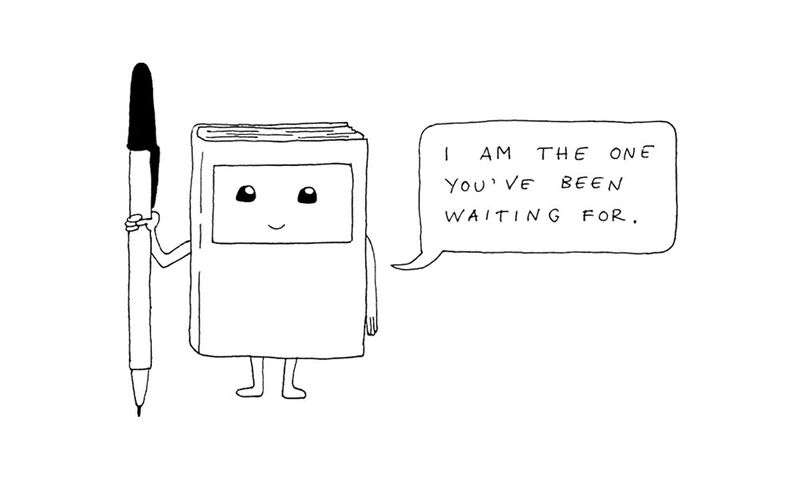
“Life’s not only black and white”, they say.
But just for a moment, let’s imagine it is.
Imagine that dark are all the things that cause you unpleasant emotions such as sadness, anger, frustration, fear, and pain. This usually includes things like conflict in relationships, financial instability, or even lacking purpose in life.
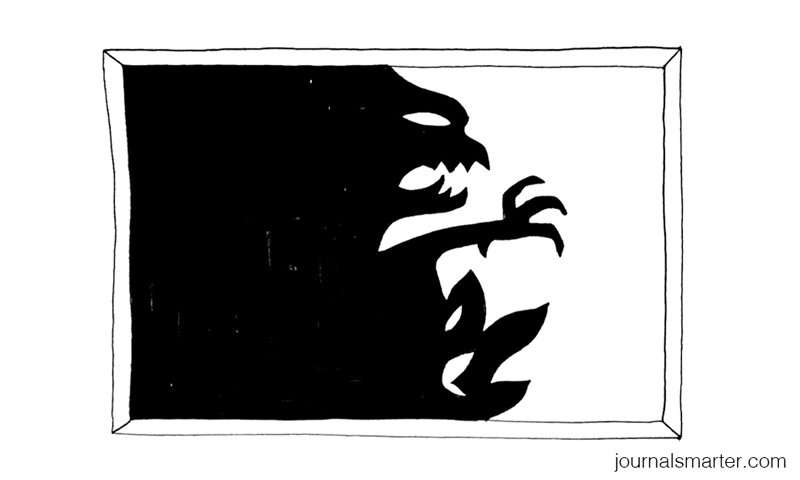
White are the things that make you feel pleasant emotions such as joy, excitement, peace, and fulfilment. For most people, this involves stuff like getting promoted, falling in love, completing a big project, or going on a holiday.
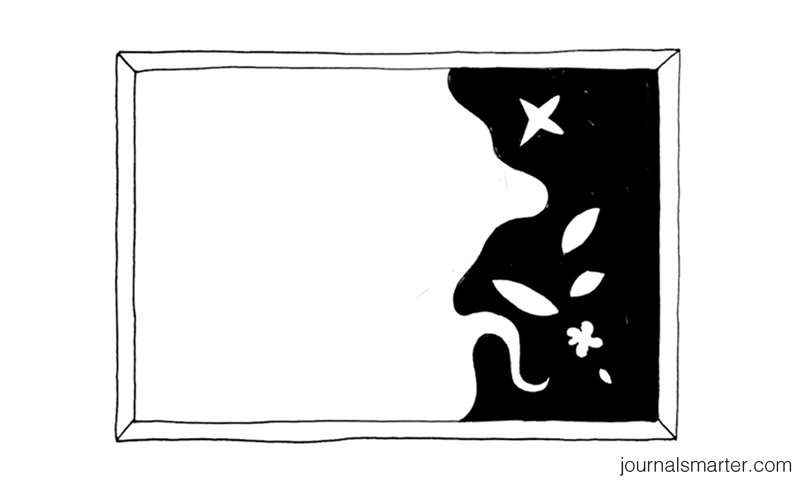
The problem is, most people have what psychologists call a negativity bias. This means that, for most of us, on a black and white scale, life looks more or less like one of the following images:
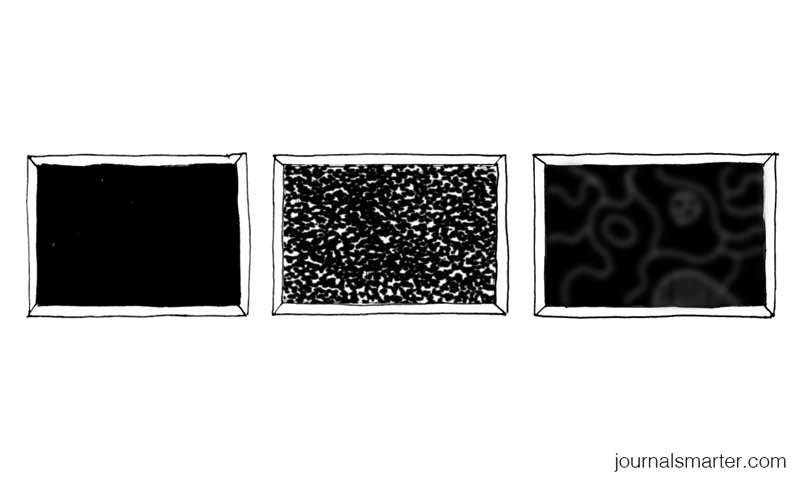
In other words, it takes very little for us to see the black spots (the queue that moves too slow, the driver that goes too fast, the rude lady at the market, the weather); however, we take most good things for granted and we rarely notice them (if you hear a hundred compliments and one piece of negative feedback, guess where your attention will go?)
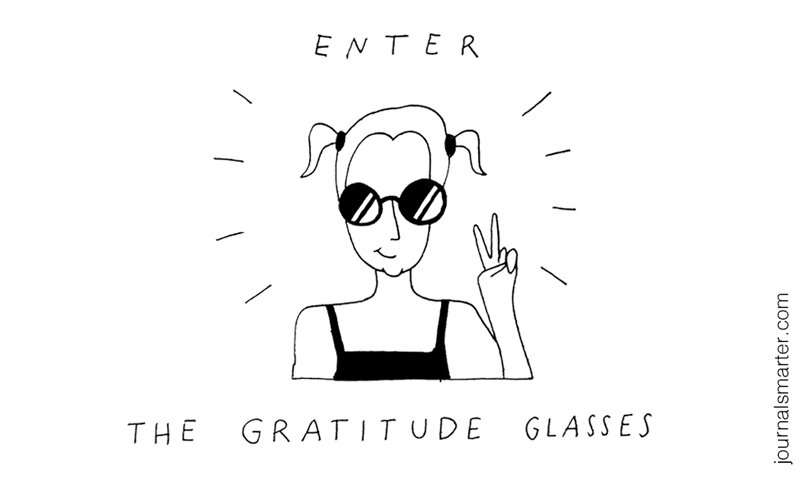
Now imagine gratitude like a pair of special glasses that allows us to reshape the way we see life. Let’s call them the Gratitude Glasses (GG).
The Gratitude Glasses help us see the white bits again, so we can slowly understand that life is not actually so dark, but instead a beautiful mix of emotional shades that bring depth to our existence.
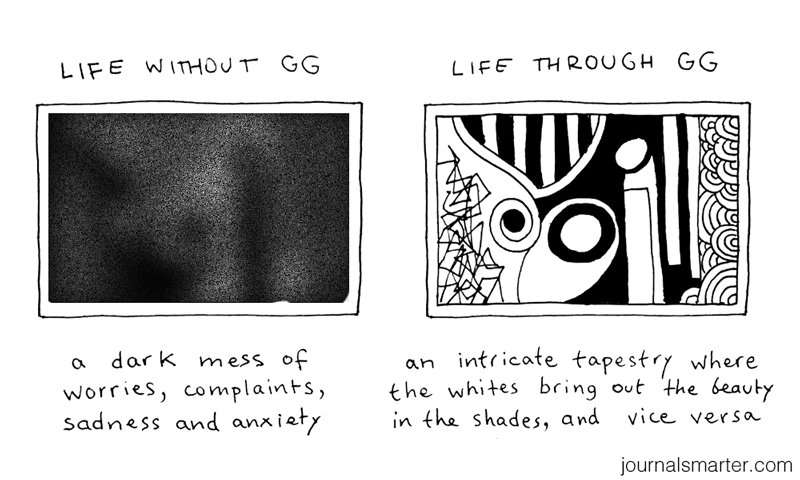
I thought I was happy, but then I started practicing gratitude and realized I didn’t really know what happiness was before. Therefore, here’s my conclusion: not only is gratitude beneficial, it’s a necessary condition for a happy life, and a skill to be learned. As benedictine monk David Steindl-Rast said, “Happiness does not lead to gratitude. Gratitude leads to happiness.”
Gratitude Journaling
Keeping a gratitude journal is probably one of the most popular self-help practices out there, but sadly the term “gratitude” is so overused and sticky with woo that many people disregard it before even trying it. Others give up because they see no effects.
This is what happened to me… until I started getting how it works.
Think about your gratitude journal as a tiny friend that reminds you to wear your Gratitude Glasses. He also makes them look prettier, lighter, and easier to wear. His job is extremely important, because consistency and enjoyment are necessary to shift to an appreciation-based mentality.
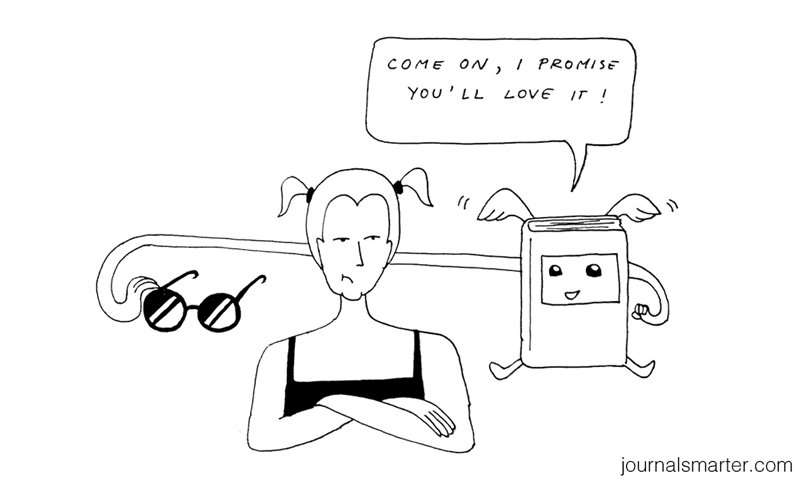
There is no right or wrong way to keep a gratitude journal, but there are a few crazy-powerful exercises and principles that really rocked my world—and my negative bias. I hope they’ll change your life too.
1. Don’t confuse gratitude with positive thinking
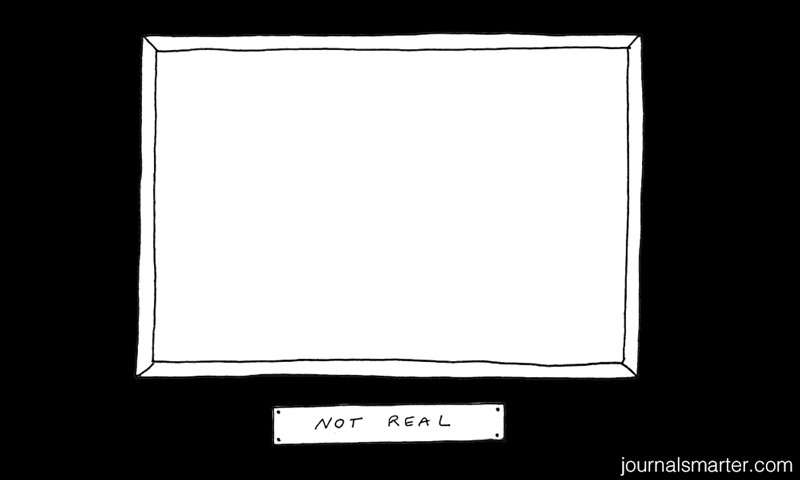
I feel some aversion to the words motivation and positivity, because they often bring up assumptions that happiness is the absence (or denial) of challenges and problems. Seeing a completely white painting of life is as dangerous and delusional as seeing only the darkness, and it often leads to irresponsible and misinformed decisions.
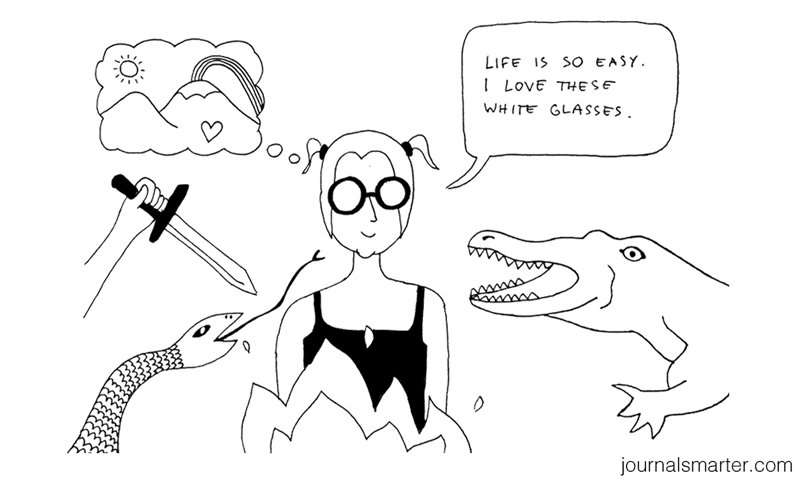
This is not what gratitude it. Gratitude is not denial or escapism: it’s realizing that wherever there is black, there is also white, and happiness lies in the balance between them. The Gratitude Glasses don’t make the darkness go away, nor do they replace it with light: they just teach us to see both shades for what they are — transient, subjective, complementary — and appreciate the beauty in the contrast.
Let’s say your close family member just died. That’s really sad and painful. You should honor those challenging emotions, feel them, and take time to grieve. But then use gratitude to see the other side of the coin. Appreciate the good times you spent together, the invaluable time you still have with other loved ones, and how lucky you are to be alive.
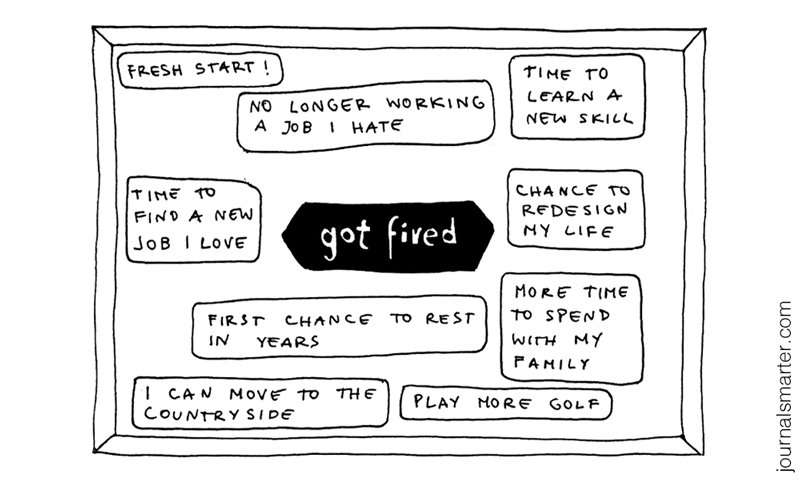
I don’t believe there is such a thing as “too much gratitude”. Unlike what many people think, gratitude doesn’t take away your strength. You don’t need anger to engage in positive action — if you’re like me, anger will never inspire you as much as gratitude when it comes to helping others or changing the world.
When times are hard, use your gratitude journal as a reality check. Any fully-black or fully-white picture is a lie. Don’t deny what’s happening: always look at both sides of it, and appreciate the contrast.
2. Practice six levels of gratitude
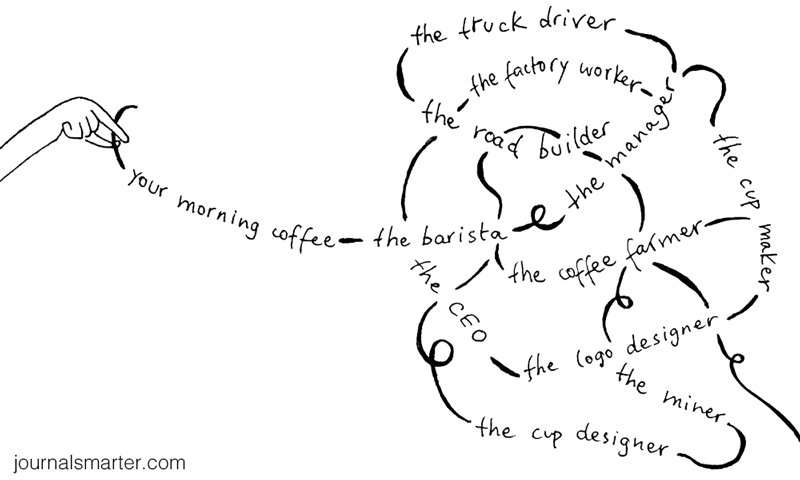
In his book Thanks a Thousand, AJ Jacobs tells the story of how he went around the world thanking everyone responsible for making his morning cup of coffee (from the farmers to the truck drivers to the guy who made the company’s logo), and how allowing himself to go down the rabbit hole of gratitude improved not only the lives of those he thanked, but also his, for noticing the amount of things to be grateful for in such a simple thing as coffee.
Everything is connected, and once you start seeing that — once you pull at one single loose thread — you’ll see how much there is to be grateful for, even in the most challenging problems you’re facing.
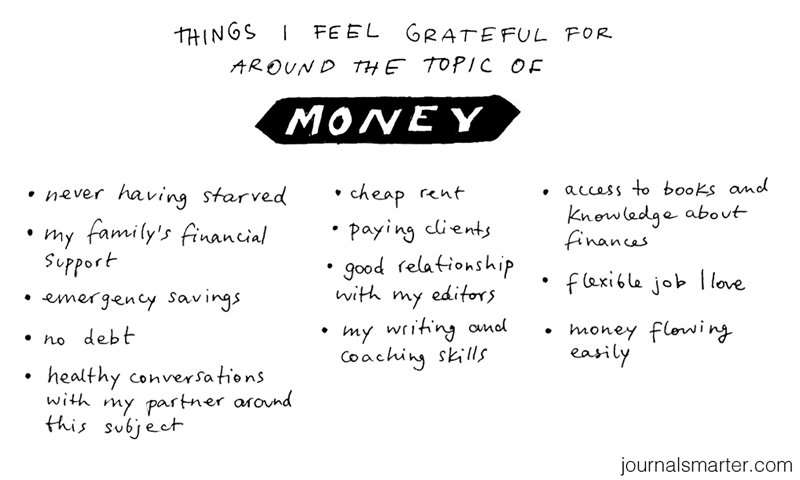
You can use your gratitude journal to apply this principle and bring more gratitude to the challenging areas in your life. Whether for you it’s money, relationships, work, or finding purpose in life, allow yourself to go down the rabbit hole of gratitude by exploring the little happy things that exist in each of those areas. Once the white spots get exposed, the problem becomes simpler and much easier to handle.
3. Fight the numbness
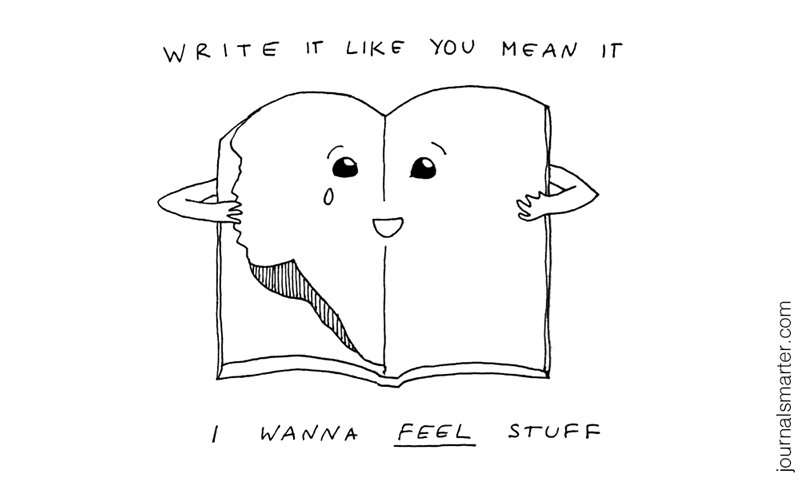
When you journal every day about things you’re grateful for, it’s easy to fall for repetition, such as always writing “my family” or “my health” or “my cats”.
The problem with repetition is that causes habituation: you write down the words, but you eventually stop feeling the gratitude. It stops having a positive effect. It’s like wearing the glasses on your face but keeping your eyes closed.
In order for gratitude journaling to be effective, you need to feel it on a physical and emotional level. You need to actually see the whites, not just the phosphenes(*) on the inside of your eyelids.
Luckily, this is within your reach.
One way to stop the numbness and feel grateful with every journaling session is to focus on the contrast between dark and light, so that the light becomes stronger. You can do this by asking yourself:
“What do I have that others don’t?”
or
“What do I have today that I didn’t have before?”
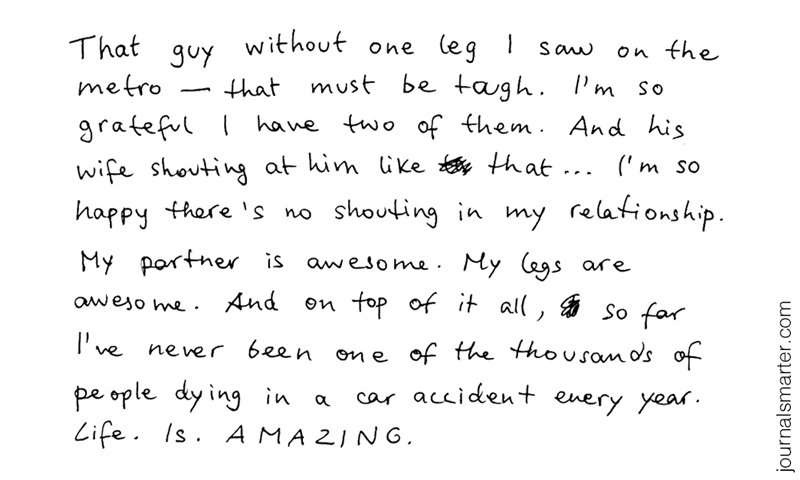
Another way is to alternate the objects of your gratitude so you always have something new to write about. In one of his podcasts, Tim Ferriss suggests writing about each of the following four things in your gratitude journal:
- A relationship — few things can bring us more genuine gratitude and joy than our loved ones;
- An event from yesterday — something that happened yesterday that you feel grateful for;
- An opportunity today — something you get to do today, no matter how small (like reading a book) or big (do meaningful work you love);
- A small thing near you — like the sun on your skin, the roof above your head, or your comfortable chair.
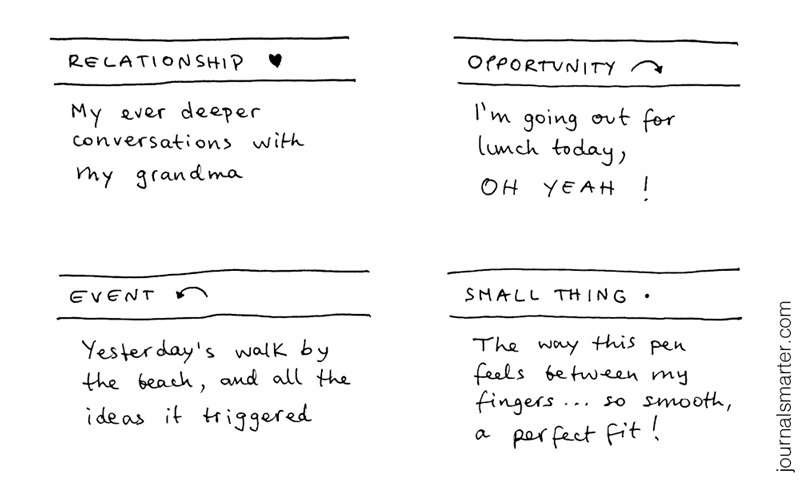
4. Keep on wearing the glasses
For over ten years, Oprah wrote down, every single day, five things she felt grateful for. Then, somewhere along the way, things got busy, and she dropped the daily practice.
Suddenly, she says, she “stopped feeling the joy of simple moments”, and became “one of those people who never have time to feel delight”. But then, as soon as she realized this and got back to journaling, her show became more successful than ever and she was happier and fulfilled again.
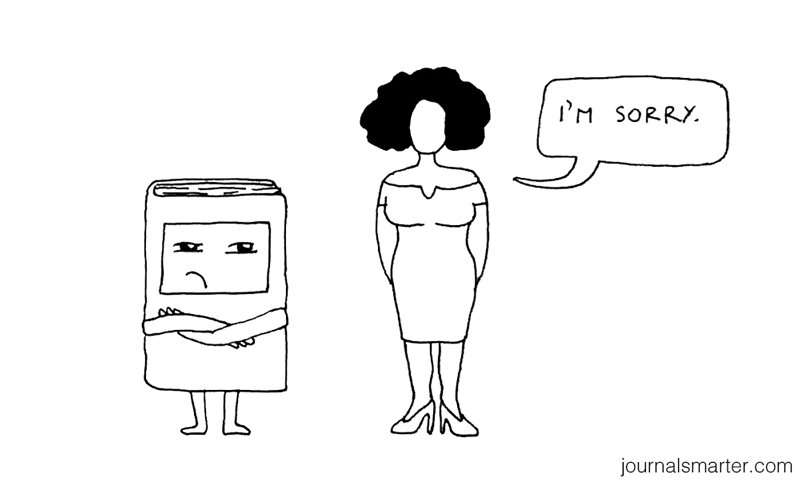
If you want to cultivate a gratitude mentality, you need to put in the daily reps. If you suddenly stop wearing your glasses, it’s obvious that you’ll go back to seeing a blurry reality.
What (probably) happened to Oprah is what happens to most of us: we think that achievement is the way to happiness, so we get lost in busyness and doing, and we forget that if we don’t take time to appreciate our achievements, we’ll never be truly happy.

A gratitude journal is a great way to consistently and intentionally fight the negativity bias; but in order for that to happen, you need to make it a habit.
Here are a few tips to cultivate consistency:
- Use a notebook and a pen that look good and feel good;
- Keep reminding yourself of the ridiculous amount of scientifically proven benefits of gratitude;
- Don’t make gratitude journaling into a chore: treat it as a pleasure, as something you get to do, as a treasured ritual.
The thing is, even if you do those things, sometimes it will be hard to stick with the habit. There are other things to do. You’re too busy. Too overwhelmed. If Oprah can struggle, so can you.
When those hard days hit me, there is one exercise that always works for me:
I simply express gratitude to myself as if I was someone else whose appreciation I crave (for example, a mentor, a parent, or a teacher).
Here is an example:
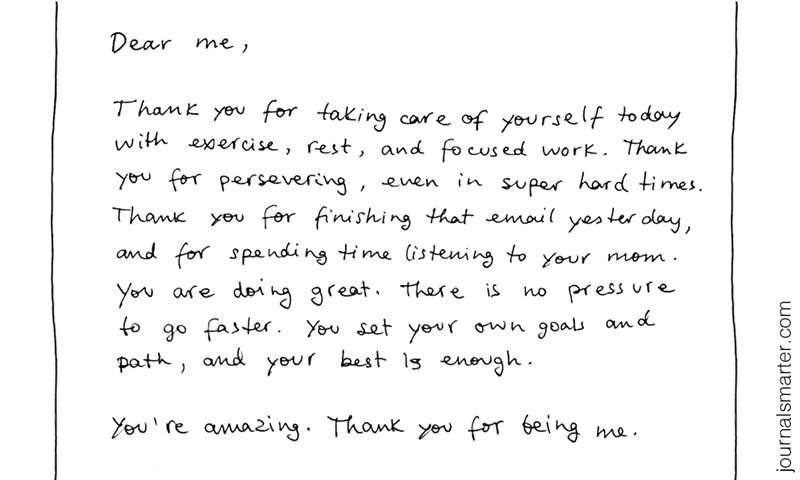
Whether I feel demotivated, anxious, overwhelmed, or just really low in self-esteem, this exercise always feels incredibly healing.
Receiving appreciation from other people can become an obsession because we never really take the time to give it to ourselves. This exercise is the perfect solution: it’s easier to acknowledge our achievements from an outsider’s perspective, but it feels so powerful because we are finally seeing it ourselves. So every once in a while, wear your gratitude glasses and look in the mirror. Appreciate yourself for who you are, and enjoy.
5. Don’t keep it all to yourself
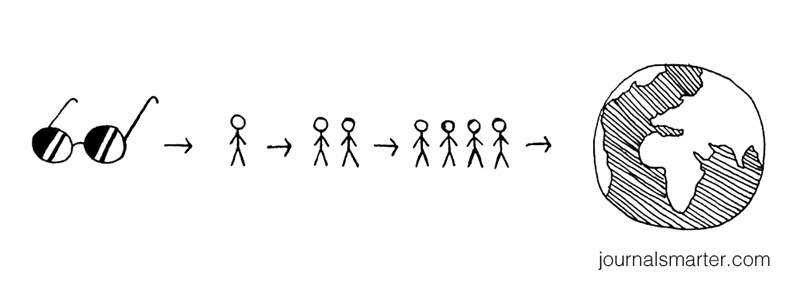
According to Robert Emmons, a psychology professor at UC Davis, “Grateful living is possible only when we realize that other people and agents do things for us that we cannot do for ourselves.”
Keeping a journal is powerful, but if you just stay inside your own bubble, you are missing out on the most effective way to create happiness: making other people happy.
One of the best ways to make other people happy is to acknowledge the positive ways in which they have contributed to our happiness, and thanking them for it.
Very often, instead of just journaling about random things, I write thank you notes to specific people. This allows me to feel more positively towards them, and it also gives me a framework to go deeper into my gratitude work.
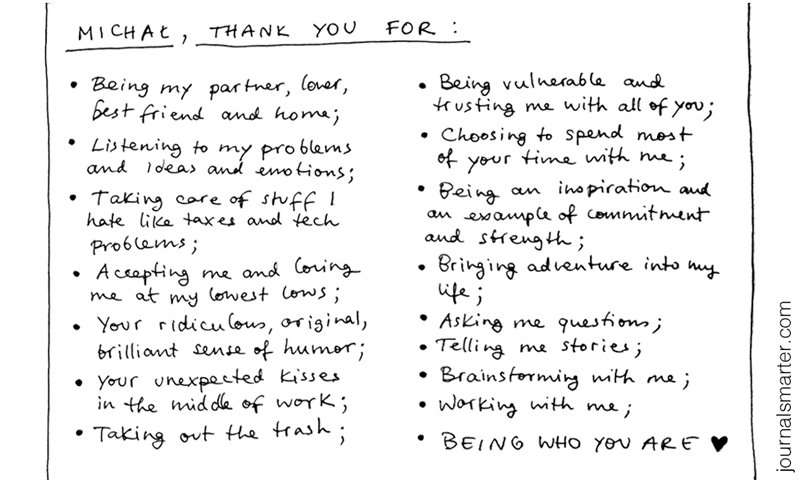
And then, whenever I feel like it, I copy those thank you notes into an email and hit send, or I read them out loud to that person. This has been one of the most transformational relationship practices I have ever tried: imagine receiving a deep, heartfelt, unexpected thank-you letter from someone you know. How would that impact your relationship?
But I set myself no obligation to share it. If I don’t feel like it, I just keep it in my journal. This no-pressure approach allows me to be fully open and vulnerable in my writing, and if I do end up sharing it, it’s raw and impactful.
Where to start?
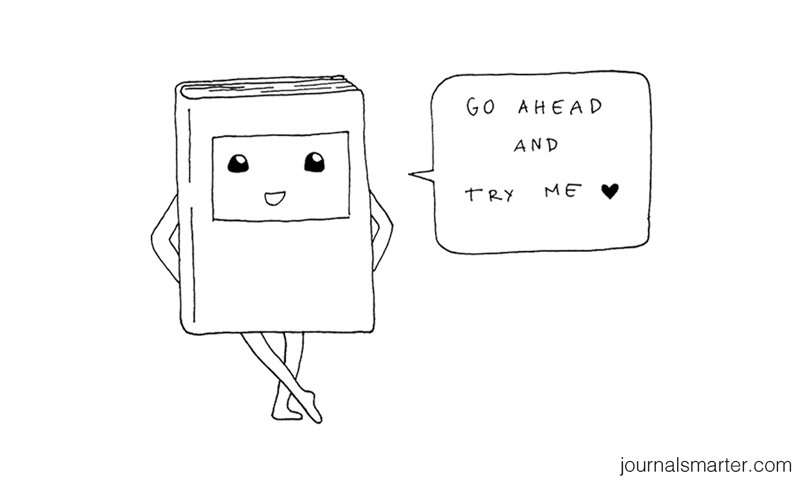
Grab a notebook (either buy a new one or use your current journal), define a time every day, and start experimenting with the exercises above.
You might want to list five things every day, write thank you notes, explore a specific challenging topic, or follow Tim Ferriss’s four-step exercise — pick a practice you like, and make it a habit.
Life may not be actually black and white, but your state of mind and happiness do depend on where you choose to focus your attention. Keep wearing your gratitude glasses consistently and intentionally, and who knows — soon you might be able to see the rainbow.
A thank you note
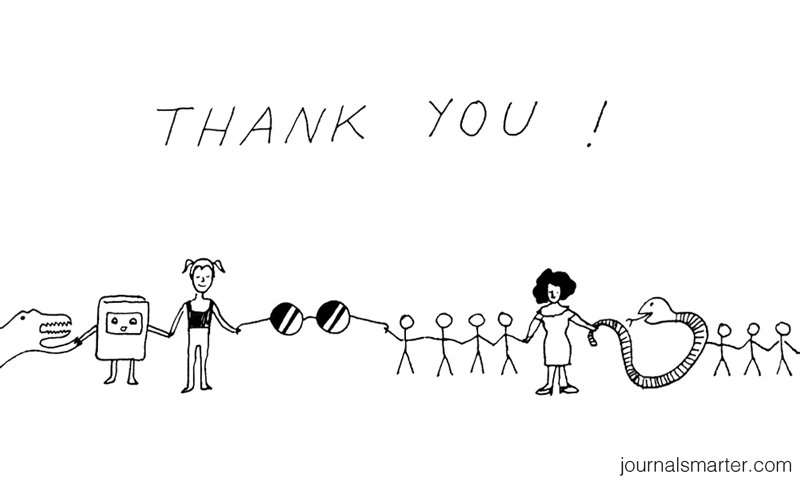
Thank you AJ Jacobs for inspiring me with your work to write this article, and for your positive impact in the world. Everyone, I highly recommend you check AJ’s work at ajjacobs.com.
Thank you Tim Ferriss for your amazing exercise I included in this article, for sharing AJ Jacob’s work on the 4-Hour Workweek, and for being an overall inspiration in my work and life.
Thank you Oprah for quitting your gratitude journal, going back to it, and sharing the story.
Thank you everyone whose research I quoted, and whose ideas I have borrowed, knowingly or not, throughout my life, that in a way or another have led me to writing this.
And finally, thank you, dear reader, for reading this article. I really appreciate your time, your visit to this blog, and (hopefully — not trying to be cheeky) your email subscription.